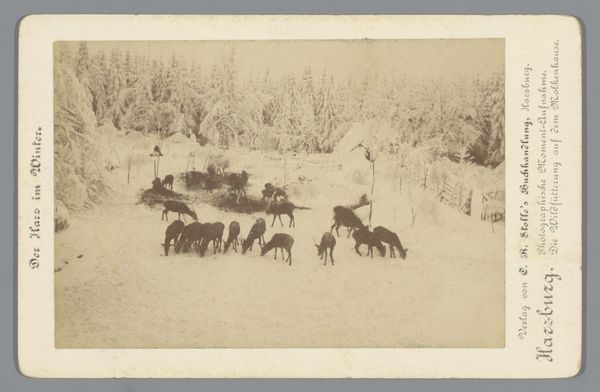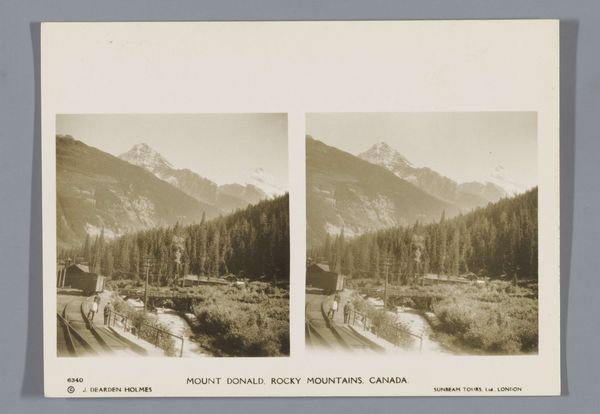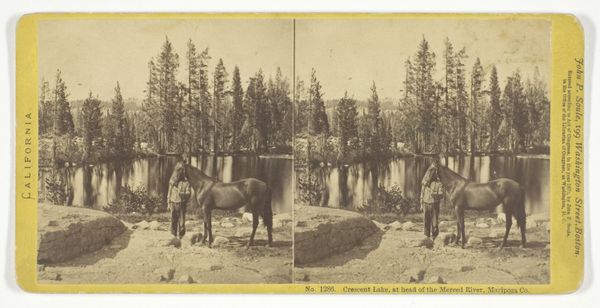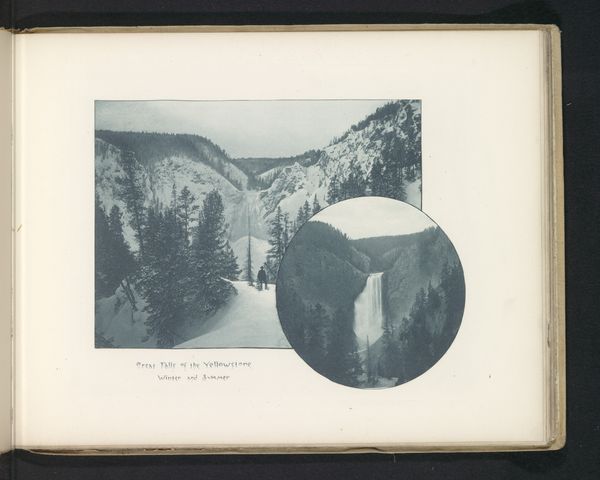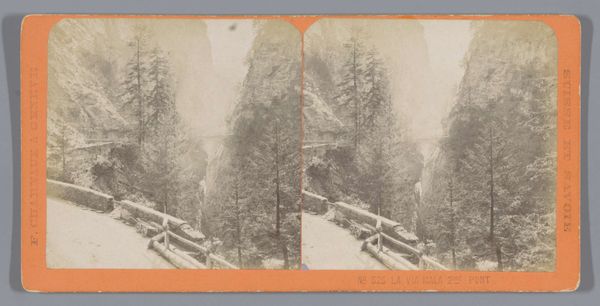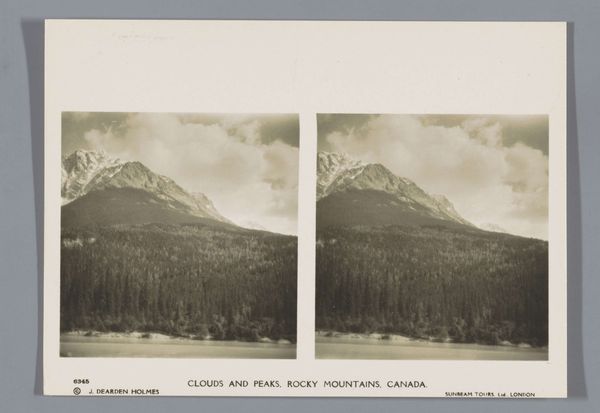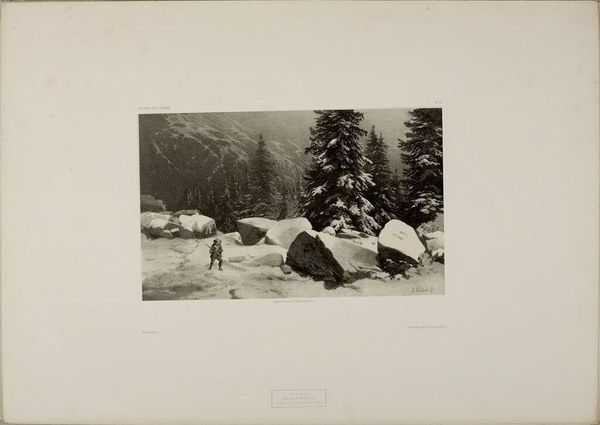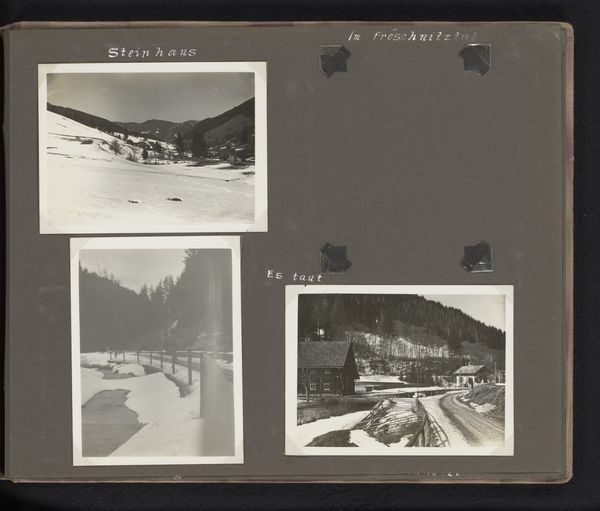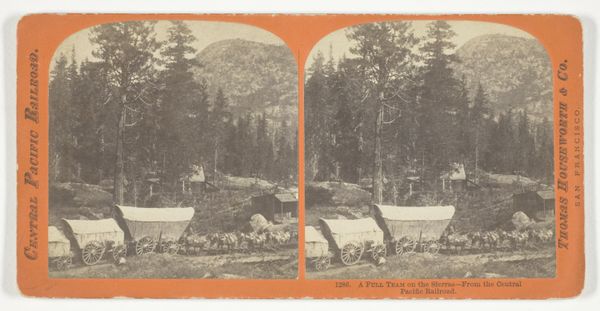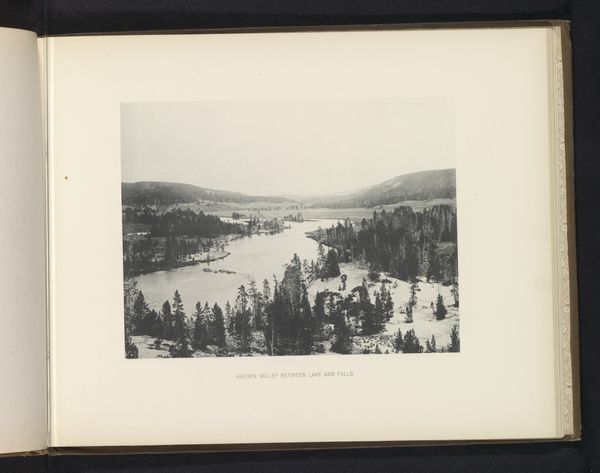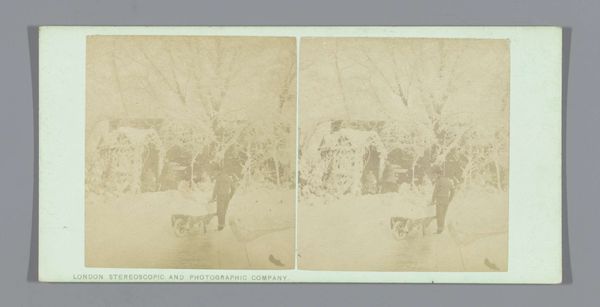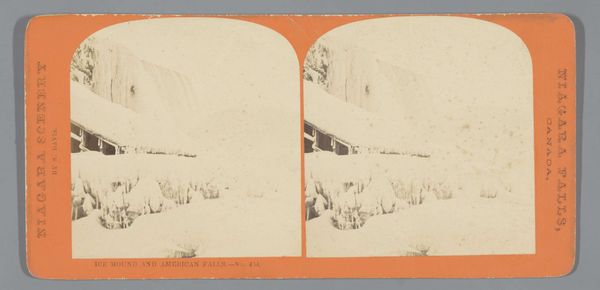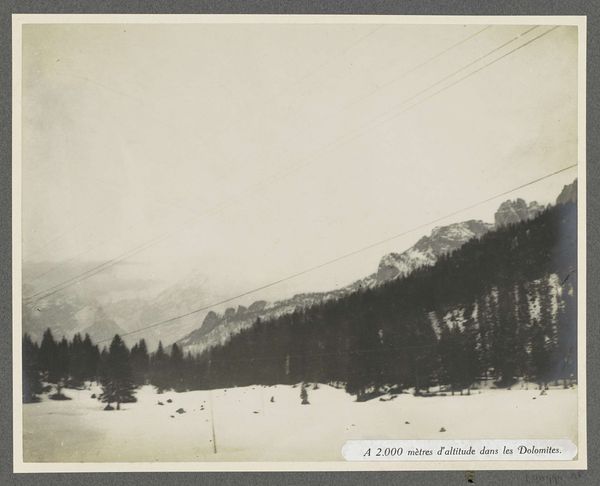
print, photography, gelatin-silver-print
# print
#
landscape
#
photography
#
orientalism
#
gelatin-silver-print
#
genre-painting
#
realism
Dimensions: height 83 mm, width 115 mm
Copyright: Rijks Museum: Open Domain
Curator: My initial impression? It's like stepping into a silent film, a snow globe moment captured in monochrome. Editor: That’s quite apt! What we're looking at is "Paardenkar rijdt in de buurt van Banff, Canada", a photograph taken by J. Dearden Holmes sometime between 1924 and 1926. It’s a gelatin silver print. And there are actually two of them. I would expect it to work as a stereoscope photograph for binocular viewing to create a 3-D illusion. Curator: Oh, a stereoscope! I hadn't noticed, that adds an incredible dimension—literally! It transforms the viewing from passive to active. The snow-laden trees… I can almost feel the crisp mountain air. The horse-drawn cart… Is it full of dreams, perhaps? Or just hay? Editor: Probably hay! It is genre painting though it also draws strongly on the traditions of landscape painting and the pictorial aesthetic with a slightly Orientalist leaning, it seems almost nostalgic even for its own time, if you consider how rapidly technology was advancing in the 1920s. The photographer turns deliberately away from the new. This focus is also evident from the lack of attention to Indigenous perspectives during a time when they were dealing with immense pressures from settlers. Curator: That's a good point. A longing for something perhaps idealized, escaping the relentless march of modernity. A selective remembering if you will. Editor: Precisely. The monochrome enhances that sense of distance, imbuing the scene with a kind of timelessness, and simultaneously emphasizing its historical situatedness as a document from that time. But it’s also important to be aware of the narrative it subtly promotes – who is included and excluded from the picture it paints of that historical moment? Whose stories are centered, and whose are marginalized? Curator: So, not just a pretty picture then, but a cultural artifact prompting deeper reflection? Food for thought alongside the hay in the cart, I'd say. Editor: Definitely. A gentle scene of nature, with complicated implications and untold narratives surrounding it. Curator: That tension between surface and depth, simple beauty, and complex narratives—it keeps pulling me back in. Editor: As it should. Art, after all, invites ongoing conversation.
Comments
No comments
Be the first to comment and join the conversation on the ultimate creative platform.
